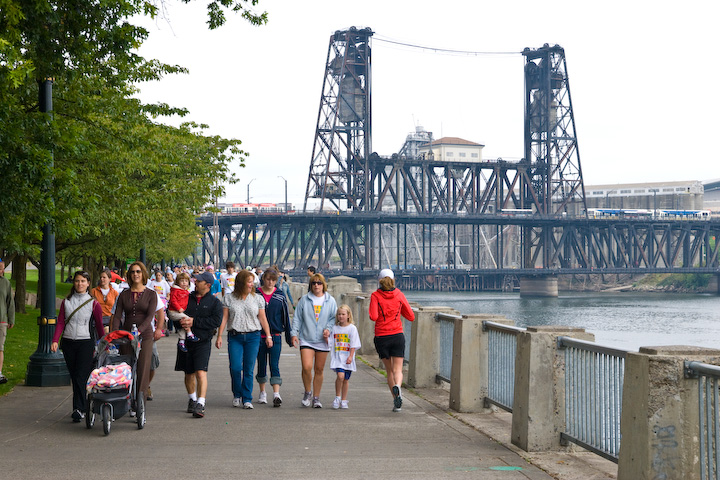
Many of Portland’s cultural venues lie along a six-block linear park known as the South Park Blocks. Two of the largest performing arts centers and the Oregon History Museum are on the east side; the Portland Art Museum’s two-block complex is to the west. Interspersed among them is some of the city’s most impressive early architecture.
The Park Blocks begin near the center of downtown and parallel 10th Avenue and Broadway. A walking route of the district begins at a fountain-centered plaza at the intersection of Southwest Park Avenue and Salmon Street.
Below are the main attractions.
Arlene Schnitzer Concert Hall
1037 SW Broadway
Heading south along the Park Blocks from Salmon Street, the Arlene Schnitzer Concert Hall is on the left. This center of music, dance, drama and other live entertainment is recognized nationally as one of the top 10 performing arts centers in the U.S. The theater’s Italian Rococo Revival architecture dates to 1928 when it opened as the Portland Public Theater. Now, completely revitalized, it is a venue of the Portland Center for the Performing Arts.
A bricked sidewalk next to the theater leads down an incline to Broadway and the main entrance and box office. Very prominent is the huge, theatrically lighted “Portland” sign above the marquee.
Performance schedules and prices vary for this and the two other Portland Center for the Performing Arts venues in the Antoinette Hatfield Hall next door.
Antoinette Hatfield Hall
1111 SW Broadway
This performance space next to the Arlene Schnitzer Concert Hall contains two theaters, the 880-seat Newmark Theater designed after the Edwardian-style theaters of Europe, and the smaller Winningstad Theater. The main entrance is on Broadway. The Art Bar inside the building serves snacks, desserts and beverages.
The corridor between the two performing arts buildings has been laid out with broad walkways and a staircase.
The Portland Art Museum
1219 SW Park Avenue
The Portland Art Museum is across Park Avenue from the Antoinette Hatfield Hall. Its two buildings form a complex of modern architecture with a courtyard between them. A world-renowned museum, it features art from world masters, plus contemporary works, Native American art displays, and traveling exhibits. Admission is $10
Hours:
Tuesday, Wednesday and Saturday: 10 a.m. – 5 p.m.
Thursday and Friday: 10 a.m. – 8 p.m.
Sunday: noon – 5 p.m. closed Monday.
Oregon Historical Society Museum
1200 SW Park Avenue
Just beyond the theaters on the east side of Park Avenue is the spectacular, larger-than-life mural on the Historical Society Museum. The work of the American architectural muralist Richard Haas, it follows the art style of trompe-l’œil (French for “fool the eye”), making it appear three-dimensional. The mural overlooks the museum’s large outdoor plaza.
Inside are displays of state history, a research library and gift store. The gift store entrance is on Broadway.
Hours:
Tuesday through Saturday: 10 a.m. – 5 p.m.
Sunday: Noon – 5 p.m.
Historic Churches
Along the Park Blocks are some of Portland’s earliest churches, now with historic significance. Next to the Antoinette Hatfield Hall is the First Congregational Church, built in 1891 to resemble Old South Church in Boston. Significant features are the 175-foot bell tower, stained glass windows and stone construction.
Just past the Art Museum, St. James Lutheran Church at 1315 SW Park Avenue is a stately gothic-style stone structure dating to 1910.
A block further, on the east side of the park (1430 SW Park Ave.) is the First Christian Church, dating from 1879.
Across Market Street is the entrance to Portland State University, where the Park Blocks continue through this vibrant urban campus.
Park benches along the South Park Blocks expanse offer a place to relax and watch the parade of locals and tourists, students and culture-connoisseurs passing through this delightful section of the city.


